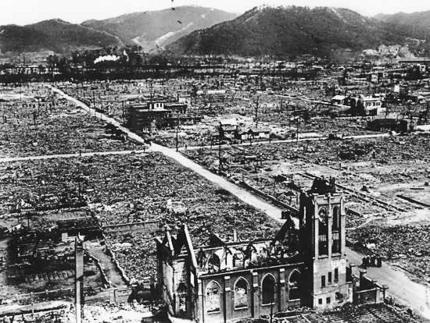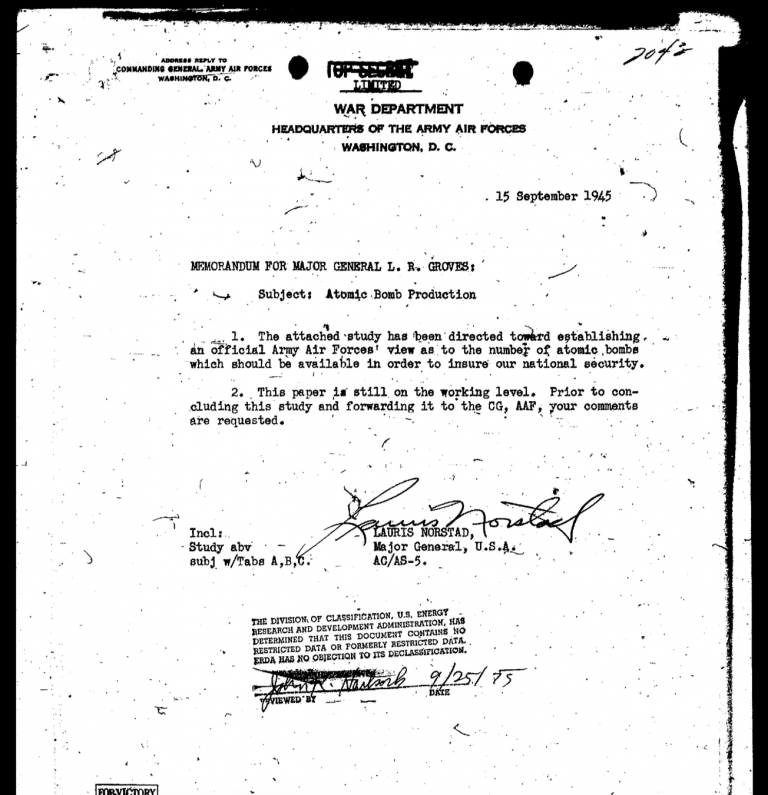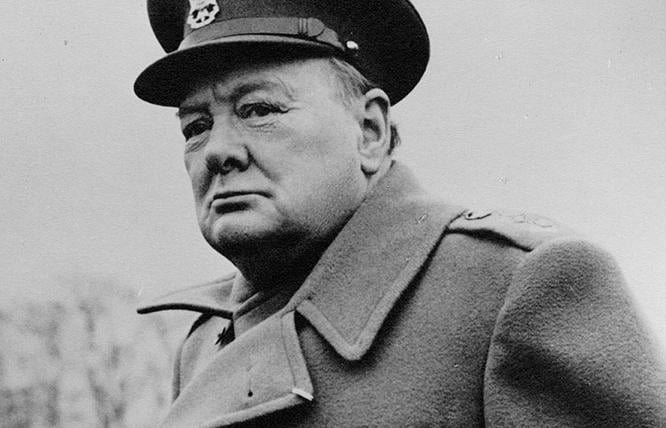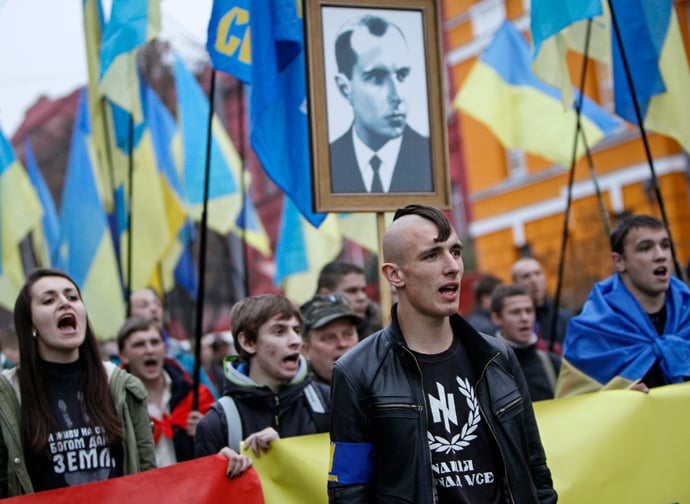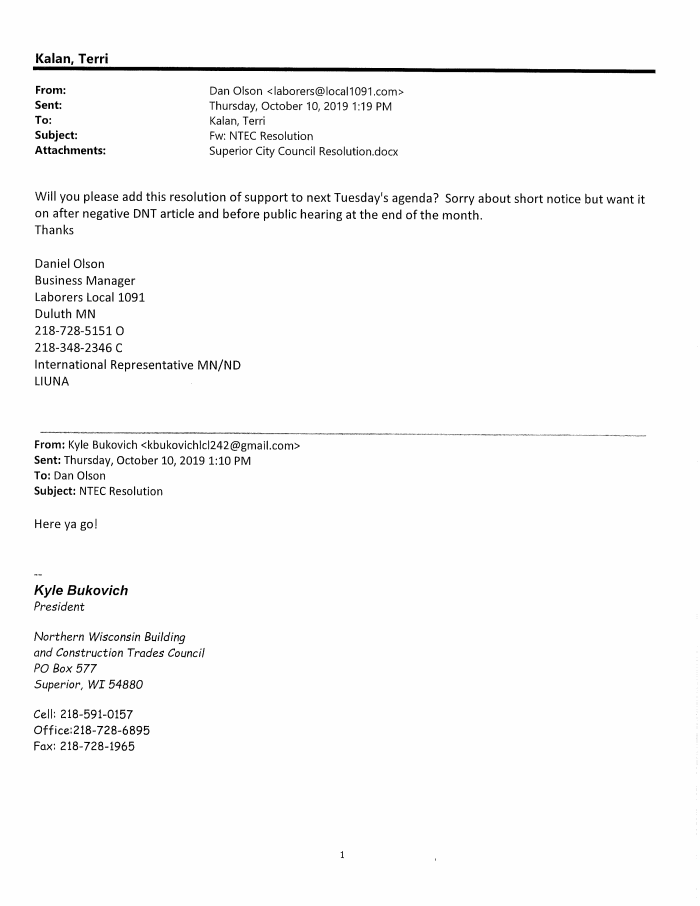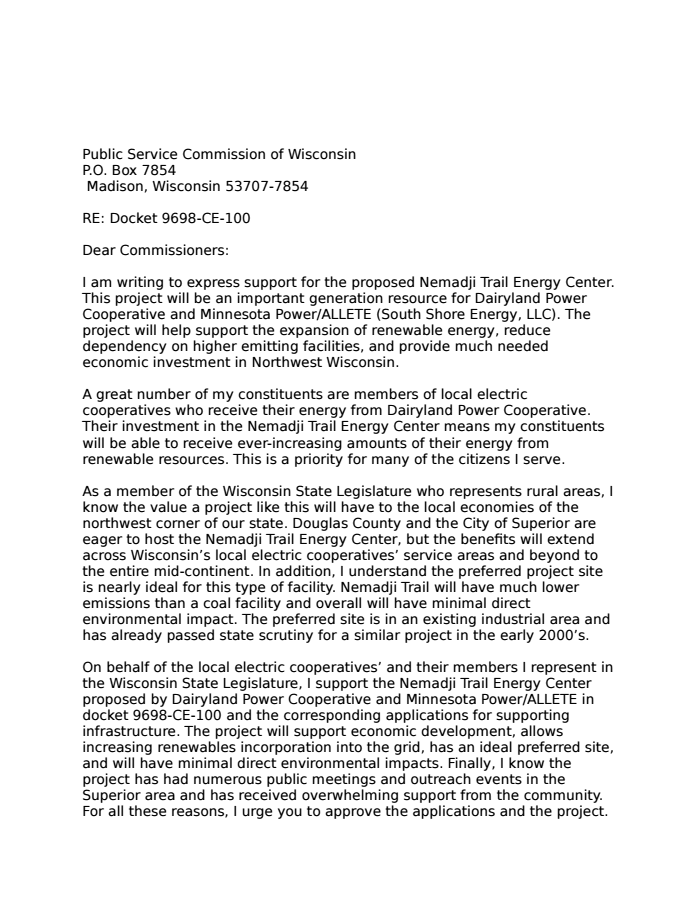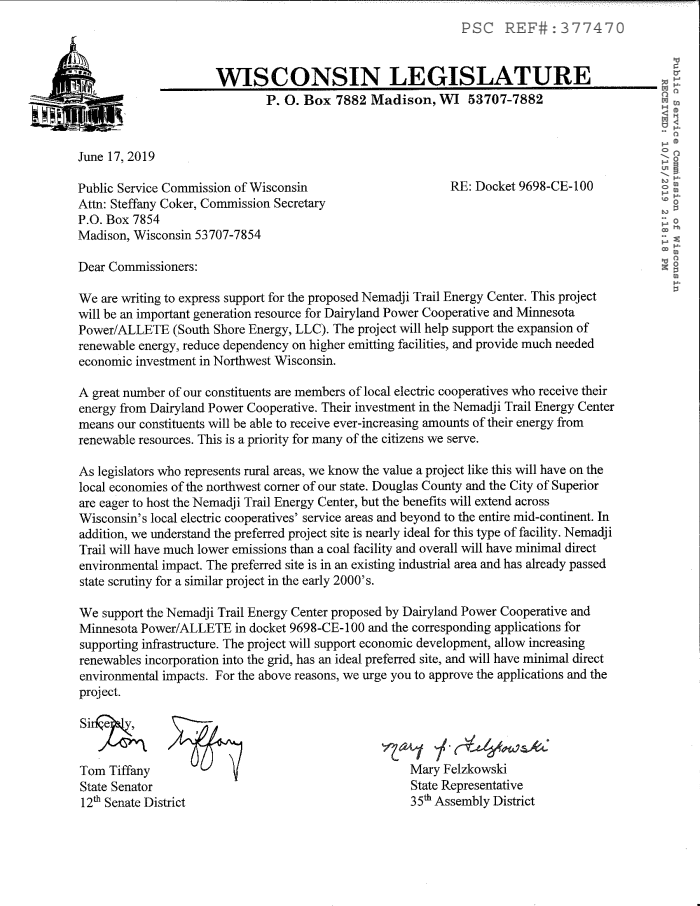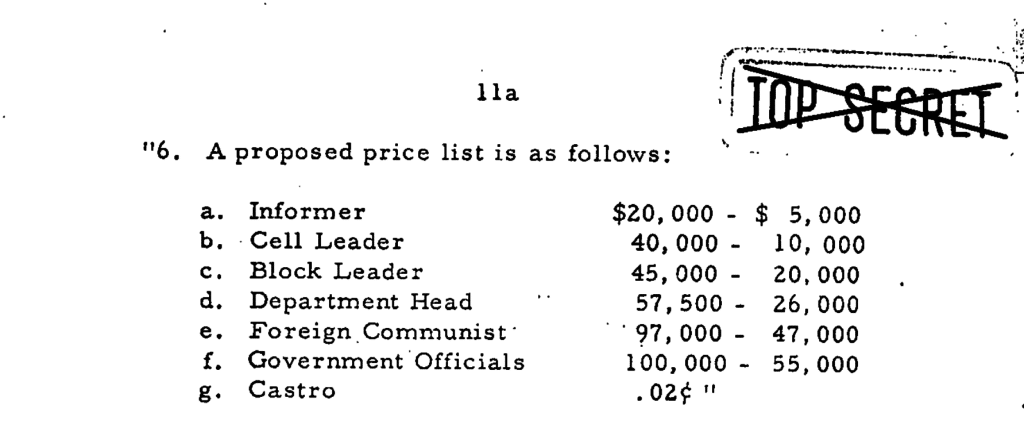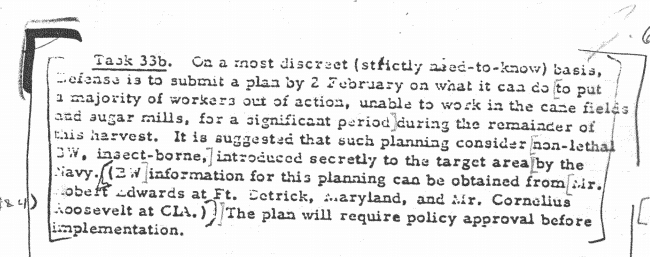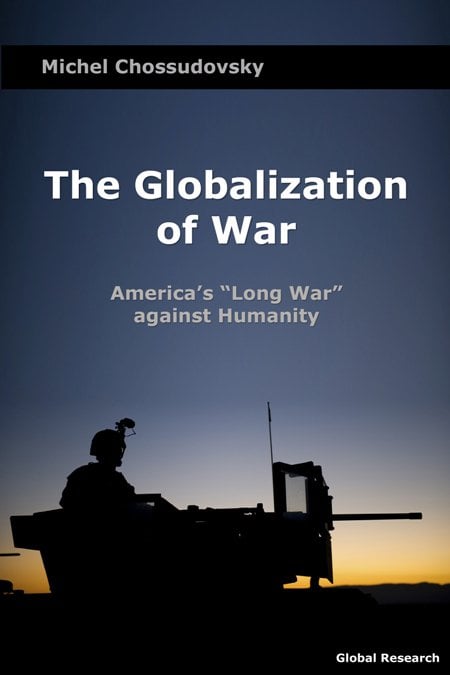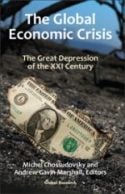First published by WhoWhatWhy and Global Research at the outset of the Trump Administration in February 2017
When the uninitiated think of the “Deep State,” they tend to imagine a group of men getting together in a room, smoking cigars and plotting world domination. But the Deep State is not one coordinated network of people controlling the government from the shadows.
Instead, it refers to individuals and groups that have the resources to shape the direction of the world to their benefit and don’t hesitate to make use of them. At times, the interests of different factions of the Deep State collide. That often happens when the direction of the world is rapidly changing, as is the case now after the election of Donald Trump.
Nobody knows this better than Peter Dale Scott, the foremost expert on the US Deep State. Below, you will find a new introduction to the paperback version of The American Deep State: Big Money, Big Oil, and the Struggle for U.S. Democracy, Updated Edition (copyright 2017), (with permission of the publisher, Rowman & Littlefield. All rights reserved).
Peter Dale Scott is a former Canadian diplomat, Professor of English at the University of California, Berkeley, co-founder of the Peace and Conflict Studies program at Berkeley, poet, and 2002 recipient of the Lannan Poetry Award.
His political books include Deep Politics and the Death of JFK (1993), The Road to 9/11: Wealth, Empire, and the Future of America (2007), The War Conspiracy: JFK, 9/11 and the Deep Politics of War (2008), American War Machine: Deep Politics, the CIA Global Drug Connection, and the Road to Afghanistan (2010), The American Deep State: Wall Street, Big Oil, and the Attack on U.S. Democracy (2014) and Dallas ’63: The First Deep State Revolt Against the White House (2015). A complete bibliography can be found on his website at http://www.peterdalescott.net.
***
On February 3, 2017, the Wall Street Journal reported President Trump’s plans to pave the way for a broad rollback of the recent financial reforms of Wall Street.[1] Although no surprise, the news was in ironic contrast to the rhetoric of his campaign, when he spent months denouncing both Ted Cruz and Hillary Clinton for their links to Goldman Sachs, even when his campaign’s Financial Chairman was a former Goldman Sachs banker, Steve Mnuchin (now Trump’s Treasury Secretary).
Trump was hardly the first candidate to run against the banking establishment while surreptitiously taking money from big bankers. So did Hitler in 1933; so did Obama in 2008. (In Obama’s final campaign speech of 2008, he attacked “the greed and irresponsibility of Wall Street.”[2] But it was revealed later that Wall Street bankers and financial insiders, chiefly from Goldman Sachs, had raised $42.2 million for Obama’s 2008 campaign, more than for any previous candidate in history.)[3]
However, Trump’s connections to big money, both new (often self-made) and old (mostly institutional) were not only more blatant than usual; some were also possibly more sinister. Trump’s campaign was probably the first ever to be (as we shall see) scrutinized by the FBI for “financial connections with Russian financial figures,” and even with a Russian bank whose Washington influence was attacked years ago, after it was allegedly investigated in Russia for possible mafia connections.[4]
Trump’s appointment of the third former Goldman executive to lead Treasury in the last four administrations, after Robert Rubin (under Clinton) and Hank Paulson (under Bush), has reinforced recent speculation about Trump’s relationship to what is increasingly referred to as the deep state. That is the topic of this essay.
But we must first see what is really meant by ‘the deep state”.
What Is Meant by the Deep State?
Since 2007, when I first referred to a “deep state” in America, the term has become a meme, and even the topic of a cautious essay in The New York Times.[5] Recently it has been enhanced by a new meme, “the ’deep state’ versus Trump,” a theme that promoted Donald Trump as a genuine outsider, and entered the electoral campaign as early as August 2016.[6]
Trump reinforced this notion when he expressed opposition to America’s international defense alliances and trade deals that both traditional parties had long supported, as well as by his promise to “drain the Washington swamp.” It was encouraged again post-election by Trump’s longtime political advisor Roger Stone, formerly of the Washington lobbying firm Black, Manafort, Stone, and Kelly, once a major feature of that swamp.[7]
But those who saw the election as a contest between outsider Trump and a “deep state” tended to give two different meanings to this new term. On the one hand were those who saw the deep state as “a conglomerate of insiders” incorporating all those, outside and inside the traditional state, who “run the country no matter who is in the White House…and without the consent of voters.”[8] On the other were those who, like Chris Hedges, limited the “deep state” to those perverting constitutional American politics from the margin of the Washington Beltway — “the security and surveillance apparatus, the war machine.”[9]
But both of these simplistic definitions, suitable for campaign rhetoric, omit the commanding role played by big money — what used to be referred to as Wall Street, but now includes an increasingly powerful number of maverick non-financial billionaires like the Koch brothers. All serious studies of the deep state, including Mike Lofgren’s The Deep State and Philip Giraldi’s Deep State America as well as this book, acknowledge the importance of big money.[10]
It is important to recognize moreover, that the current division between “red” and “blue” America is overshadowed by a corresponding division at the level of big money, one that contributed greatly to the ugliness of the 2016 campaign. In The American Deep State (p. 30), I mention, albeit very briefly, the opposition of right-wing oilmen and the John Birch Society “to the relative internationalism of Wall Street.”[11] That opposition has become more powerful, and better financed, than ever before.
It has also evolved. As I noted in The American Deep State, (p. 14), the deep state “is not a structure but a system, as difficult to define, but also as real and powerful, as a weather system.” A vigorous deep state, like America, encompasses dynamic processes continuously generating new forces within it like the Internet — just as a weather system is not fixed but changes from day to day.
The Current Divisions in America and Its Wealth
Three days before the inauguration of Donald Trump, “Frontline” on PBS began a two-part program, “Divided States of America,” documenting how the polarization of American public opinion has contributed to both stagnation in Washington and widespread popular anger, on both the left and the right, against the traditional two-party system.
The Frontline show failed to address the major role played by money in aggravating this public division. For example, it followed many popular accounts in tracing the emergence of the tax-revolt Tea Party to the apparently spontaneous call on February 19, 2009, by CNBC reporter Rick Santelli in Chicago, for a “tea party,” in response to President Barack Obama’s expensive bailouts.[12]
However, this event (on the floor of the Chicago Mercantile Exchange, a deep state institution) was not only staged, it had been prepared for in advance. A domain name, chicagoteaparty.org, had been registered for it in 2008, before Obama had even been elected.[13] Jane Mayer has conclusively demonstrated the role in the funding groups behind the Tea Party played by the brothers Charles and David Koch, who in 2014 were two of the ten richest people on earth, worth a combined $32 billion as owners of the largest private oil company in America.[14] (Today their wealth is estimated at $84 billion.)
More important, as Mayer pointed out,
the Tea Party was not “a new strain” in American politics. The scale was unusual, but history had shown that similar reactionary forces had attacked virtually every Democratic president since Franklin Roosevelt. Earlier business-funded right-wing movements, from the Liberty League [of the 1930s] to the John Birch Society to [Richard Mellon] Scaife’s [anti-Clinton] Arkansas Project, all had cast Democratic presidents as traitors, usurpers, and threats to the Constitution. The undeniable element of racial resentment that tinged many Tea Party rallies was also an old and disgracefully enduring story in American politics.[15]
The Kochs’ lavish funding of the Tea Party, along with anti-tax candidates and climate-change deniers, was only one more phase in what I described in 1996 as
an enduring struggle between “America Firsters” and “New World Order” globalists, pitting, through nearly all of this [20th] century, the industry-oriented (e.g. the National Association of Manufacturers) against the financial-oriented (e.g. the Council on Foreign Relations), two different sources of wealth.[16]
A decade later Trump has revived the slogan of “America First!”, and vowed to reconsider both NATO and multilateral trade. Both factions are still there today; but, as we shall see, both now have international connections.
American Politics and the Increase in Wealth Disparity
Mayer’s helpful overview overlooks the alarming increase in wealth disparity since 1980 and especially in the last decade. Ten years ago, when I published The Road to 9/11, I noted that 225 billionaires owned as much as the bottom fifty percent of people in the world, and I repeated Kevin Phillips’ warning that
As the twenty-first century gets underway, the imbalance of wealth and democracy in the United States is unsustainable…. Either democracy must be renewed, with politics brought back to life, or wealth is likely to cement a new and less democratic regime— plutocracy by some other name.[17]
In 2010, only three years later, that indicator of disparity had risen up the pyramid from 225 billionaires to 43; and today the figure has shrunk still further to eight.[18]
As The New York Times reported in October 2015, just 158 families supplied half of the early money that had already poured into the 2016 campaign, and 138 of these families supported Republican candidates. Sixty-four of these 138 families made their fortunes in finance, mostly in hedge funds, private equity or venture capital. A further seventeen families were wealthy from energy, mostly oil and gas. What both these two groups were seeking was lower taxes and also deregulation: repeal of the Dodd-Frank Act reforming Wall Street, and (according to the Times) a lifting of the 40-year-old ban on export of US oil.[19]
Many were also “tied to networks of ideological donors who, on the left and the right alike, have sought to fundamentally reshape their own political parties” — on the one hand the twice-yearly anti-tax seminars hosted by the Kochs, and on the other “the Democracy Alliance, a network of liberal donors who have pushed Democrats to move aggressively on climate change legislation and progressive taxation.”[20]
Once again, a division in the American public was being fomented and funded by an old division within Big Money — roughly speaking, between those Trilateral Commission progressives, many flourishing from the new technologies of the global Internet, who wish the state to do more than at present about problems like wealth disparity, racial injustice and global warming, and those Heritage Foundation conservatives, many from finance and oil, who want it to do even less.
We see this ideological split even among the top eight US super billionaires in 2016, four of whom (Bill Gates, Jeff Bezos, Mark Zuckerberg, and Larry Ellison) have made their fortunes from the Internet and want the present US to progress more or less along its recent course. Warren Buffett (once number one, now number three) endorsed Hillary Clinton early on, “while calling for increased taxes on the country’s highest wage earners.”[21] Deeply dissatisfied with the status quo were numbers seven and eight, the Koch brothers, who “have fortunes largely drawn from fossil fuels,” and have “poured money into fighting solar.”[22]
The Kochs assembled a donor network of fellow mavericks, many of whom were distinguished by private ownership of their businesses, and many (Jane Mayer pointed out) “had serious past or ongoing legal problems.”[23] In early 2015 their organization revealed that it would spend $889 million leading up to the 2016 presidential contest. As USA Today reported, this unprecedented sum, “unrivaled for an outside organization, represents more than double the nearly $400 million the Republican National Committee (RNC) raised and spent during the 2012 presidential election cycle.”[24] This huge organized flow of outside funds has contributed greatly to the weakening of party discipline in Congress, especially among Republicans.
Throughout the campaign, the Kochs and Trump (whose chief backer was another maverick billionaire, Robert Mercer) were apparently at arm’s length from each other. Vanity Fair suggested in September that at that time the Kochs were “in direct opposition to the Mercers,” in a “civil war that threatens to tear the party apart” — even though, starting around 2011, the Mercers had been donating “at least $1 million a year to the Koch network.”[25]
Whatever the tensions, it was clear after the election that Trump in his transition team had “surrounded himself with people tied to the Kochs.”[26] Soon the Trump nominee for Education Secretary was Betsy DeVos, another major billionaire contributor to the Koch donor list. (Betsy’s brother Erik Prince, famous as the founder and owner of the notorious private army Blackwater, was quietly advising the Trump transition team on matters related to intelligence and defense.)[27]
And Trump’s CIA Director is Mike Pompeo, formerly a Koch-sponsored congressman “who was so closely entwined with the climate-change denying Koch brothers that he was known as the ‘congressman from Koch.”[28] (The new administration has reportedly instructed the Environmental Protection Agency to remove the climate change page from its website.)[29]
Since his election, Trump has attacked the U.S. intelligence agencies for leaking information, and reporters as being among “the most dishonest human beings on Earth.” But while attacking the Washington establishment, he is clearly reflecting the dissident big money faction of the deep state, no longer as marginal as it was in the era of the John Birch Society and later Goldwater.[30]
As the campaign and pre-inaugural preparations progressed, it became clearer that Trump, no stranger to the world of big money, had brought the old big money camp into his campaign, as well as the new. In January 2017 Trump nominated to be his SEC Chairman Jay Clayton, a Sullivan & Cromwell partner who in the past has represented Goldman Sachs and other big banks in Wall street superdeals.[31]
Clayton is the fourth former Goldman-related Trump nominee for the new administration, all of them chosen under the eyes of Trump’s chief strategist, Stephen K. Bannon, himself a former Goldman banker who moved on to become a Tea Party coordinator and executive director at the alt-right Breitbart News. (Bannon once promised to build “an insurgent, center-right populist movement that is virulently anti-establishment.”[32] It took only 10 days in the White House to make it clear that Bannon had “rapidly amassed power in the West Wing, eclipsing chief of staff Reince Priebus.”) [33]
Undoubtedly Trump entered politics as a maverick real estate investor and TV star, funding the early stages of his campaign himself. But as his campaign grew, he came to reach out more and more to Wall Street financing, notably from Robert Mercer, the co-CEO of hedge fund Renaissance Technologies,[34] Then Trump named as his campaign’s Finance Chairman Steve Mnuchin, formerly of Skull and Bones and Goldman Sachs.[35]
As many predicted, Mnuchin later became Trump’s nominee for Treasury Secretary, which could make him the third former Goldman executive to lead Treasury in the last four administrations, after Robert Rubin and Hank Paulson. In addition, Trump has named Gary Cohn, former president of Goldman Sachs, as his chief economic advisor and Director of the National Economic Council.[36]
In short, Trump did not challenge but preserved the status of what Jeffrey Sachs has called
the Wall Street-Washington complex, which has steered the financial system toward control by a few politically powerful Wall Street firms, notably Goldman Sachs, JPMorgan Chase, Citigroup, Morgan Stanley, and a handful of other financial firms.[37]
Meanwhile, just as Trump expanded his financial base to all elements of big money, so Wall Street, as it always does, ensured it had good connections to both of the final candidates. After Mnuchin joined the Trump campaign, Lloyd Blankfein, chief executive officer of Goldman Sachs announced in October 2016 his support of Hillary Clinton.[38]
All of this complexity calls for further reflection on the nature of the deep state.
Turkey and the International Deep State
To survey the more serious accounts of the “deep state in the United States,” it is useful to begin with their summary in Wikipedia under this title: as a “state within a state, which [authors] suspect exerts influence and control over public policy, regardless of which political party controls the country’s democratic institutions.”
Citing five different authors, (including myself) Wikipedia expands this definition to include the military–industrial complex, intelligence community, Wall Street, plutocrats, “big oil,” the mainstream media, national security officials, and Silicon Valley.[39]
All five authors see two essential components to the deep state. On the one hand is big money. On the other are the extra-constitutional Washington Beltway agencies like CIA that Wall Street originally campaigned for and staffed, along with the government-oriented industries that these agencies and the Pentagon work with and outsource to.[40]
Besides myself, Philip Giraldi and Mike Lofgren have also recognized that “the term was actually coined in Turkey, and is said to be a system composed of high-level elements within the intelligence services, military, security, judiciary, and organized crime.”[41] A more precise definition is that of Hugh Roberts:
The notion of the deep state … originated in Turkey, where it connoted not merely the secretive apparatuses of the state such as the police and intelligence services but above all the shady nexus between them, certain politicians and organised crime.[42]
But I may be the only author showing the extent to which the Turkish deep state, when first exposed in 1996, both overlapped with the American deep state and revealed its dark underside.
The Turkish term “deep State” (deren devlet) was coined after the so-called Susurluk incident, a 1996 car crash whose victims included the deputy chief of the Istanbul Police Department, a Member of Parliament, and Abdullah Çatlı, an international heroin trafficker and killer recruited by the Turkish police for “special missions” and paid in heroin while he was officially being sought by the Turkish authorities for murder.[43]
We see in the Susurluk incident three features of the Turkish deep state, unmentioned by Lofgren, that not only resemble the American deep state but are actually a significant component of it (and still of major importance today).
The first is that it was partly international: Abdullah Çatlı was part of a death squad chiefly recruited from the ranks of the Turkish OHD (Ozel Harp Dairesi – Special Warfare Department). The OHD had originally been set up with US encouragement as the Turkish branch of NATO’s Operation Gladio, a stay-behind force in the event of a Warsaw Pact invasion. Diverted and renamed Counter-Guerrilla to suppress the Kurdish resistance movement, the OHD troops continued to be trained in the US and to use US counterinsurgency manuals.[44]
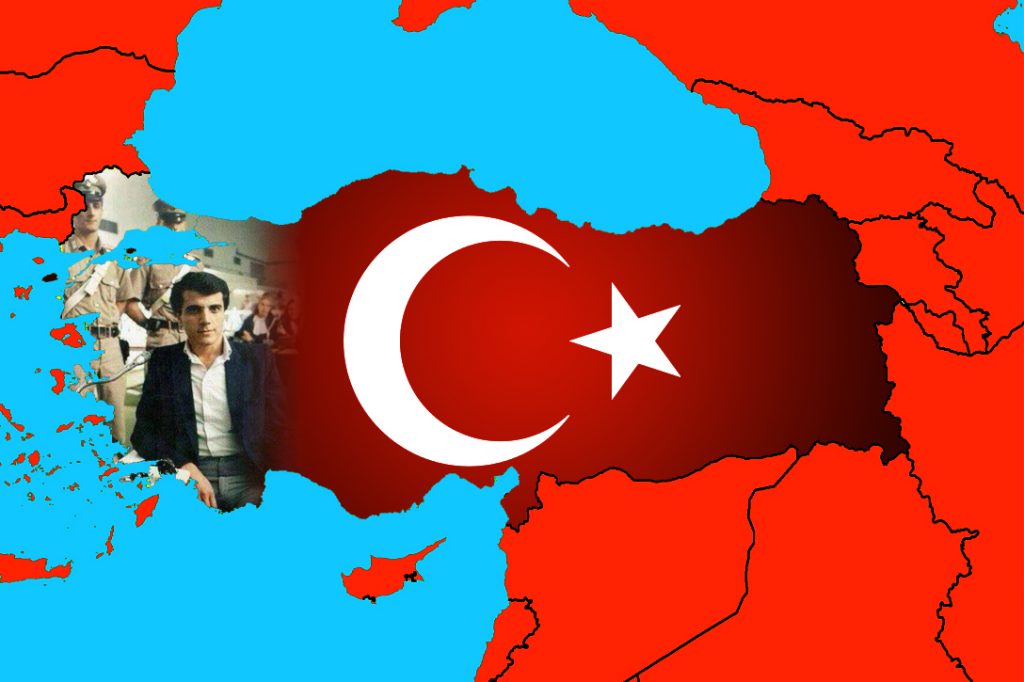
Photo credit: Adapted by WhoWhatWhy from Minestrone / Wikimedia, David Benbennick / Wikimedia and Abdullah Çatli / Twitter.
The second is that the international deep state connection revealed at Susurluk was partly criminal: the sanctioned para-state activities with Çatlı were financed by billions of dollars in profits from drug smuggling; just as the CIA in Laos and elsewhere utilized a protected drug traffic to finance its covert operations in Burma, Thailand, Laos, and Afghanistan.[45] Çatlı, a convicted drug trafficker with a special Turkish passport, was himself part of this post-Gladio international network:
Çatlı, according to Yalçın and Yurdakal, visited Miami in 1982 in the company of a known Gladio agent (and Italian neo-Nazi) and was considered to be “under the protection” of the CIA.[46]
(The Gladio agent was Stefano delle Chiaie, who had his own connections to state-sponsored terrorist activities in Italy, to the World Anti-Communist League or WACL, and more specifically to death squads working for the Operation Condor murder operation in Latin America, sponsored by the right-wing dictatorships in the region.[47] The CIA had its own shadowy connections to all three, as well as to Gladio.)
The third feature of the Susurluk event is that it was and remains a largely inscrutable intelligence-related event, or what in this book I call a “deep event,” like similar events in the United States, such as the John F. Kennedy assassination. Nearly all western accounts of the car crash overlook the claim that it was not an accident but an intended assassination.[48] Moreover the Turkish deep state was later suspected in the Turkish coup attempt of Ergenekon in 2007,[49] and its one-time parent, the US deep state, in the failed military coup of July 2016.[50] Both of these coup attempts reveal elements of what I mean by deep events.
Not just in Turkey, but also in the United States, respected authors have linked the deep state to what I call (pp. 98, 119) “structural deep events,” unsolved mysterious events that affect the political system of the country.[51] As I write, there have been a series of charges that, if substantiated, would seem to link Trump not only to an element of the American deep state, but also to an element of the Russian deep state.
Trump and the International Deep State
The first charge against Trump was the CIA-backed claim that Russian intelligence agencies hacked organizations affiliated both with Hillary Clinton and with the Democratic Party, and that the hacks were apparently “designed to benefit Donald Trump’s presidential aspirations in one fashion or another.”[52] (Politico also reported that “Ukrainian government officials tried to help Hillary Clinton and undermine Trump by publicly questioning his fitness for office.”)[53]
A second charge against Trump, closely related, was that
as major banks in America stopped lending him money following his many bankruptcies, the Trump organization was forced to seek financing from non-traditional institutions. Several had direct ties to Russian financial interests in ways that have raised eyebrows. What’s more, several of Trump’s senior advisors have business ties to Russia or its satellite politicians.[54]
In May 2016 the Washington Post and Buzzfeed charged specifically that
Trump’s top adviser, Paul Manafort, has spent much of his recent career working for pro-Russian forces in Ukraine, and doing complex deals for an oligarch with close ties to Putin.… Manafort … has, according to court documents, managed tens of millions of dollars for Oleg Deripaska, an oligarch denied entry to the U.S. reportedly for ties to organized crime, but so close to Vladimir Putin that top Russian officials fought (unsuccessfully) to get him a visa.[55]
On the eve of the new Trump presidency The New York Times reported that
American law enforcement and intelligence agencies are examining intercepted communications and financial transactions as part of a broad investigation into possible links between Russian officials and associates of President-elect Donald J. Trump, including his former campaign chairman Paul Manafort… and Roger Stone.[56]
In January 2017 Buzzfeed leaked the source of these charges: a private intelligence report transmitted by the CIA to Trump.[57] This report, by former British intelligence Christopher Steele, did not as released mention Deripaska at all, but contained instead an unexplained discussion of Deripaska’s bankers, the Alfa Group, along with its founders Mikhail Fridman and Pyotr Aven.
Just before the election The New York Times reported that
For much of the summer, the F.B.I. … scrutinized advisers close to Donald J. Trump, looked for financial connections with Russian financial figures, … and even chased a lead — which they ultimately came to doubt — about a possible secret channel of email communication from the Trump Organization to a Russian bank….
F.B.I. officials spent weeks examining computer data showing an odd stream of activity to a Trump Organization server and Alfa Bank. … But the F.B.I. ultimately concluded that there could be an innocuous explanation, like a marketing email or spam, for the computer contacts.[58]
The next day the Jewish paper Forward raised a question, not yet answered, about Alfa Bank’s principal owner, the philanthropist oligarch Mikhail Fridman, listed as #73 on the Forbes list of the world’s billionaires in 2016 (once #20), and the second wealthiest Russian:
Is a Russian Jewish oligarch with Israeli citizenship and close ties to both Vladimir Putin and Benjamin Netanyahu running a secret cyber-communications channel between Donald Trump’s presidential campaign and Russian authorities? [59]
The various speculations about the Trump link to Alfa and Fridman, whether innocuous or shady, justify a closer look at the charges about Alfa’s influence two decades ago, when Alfa’s dubious clout in Washington included protection from both senior Democrats like Richard Burt of Kissinger McLarty Associates and also senior Republicans like Dick Cheney.[60] As The Guardian reported in 2002, Alfa’s 1990s clout in Washington was demonstrated when its oil company, Tyumen,
was loaned $489m in credits by the US Export-Import Bank after lobbying by Halliburton…. The [Clinton] White House and State Department tried to veto the Russian deal. But after intense lobbying by Halliburton the objections were overruled on Capitol Hill [which then was Republican controlled]…. The State Department’s concerns were based on the fact that Tyumen was controlled by a holding conglomerate, the Alfa Group, that had been investigated in Russia for mafia connections.[61]
Veteran newsman Knut Royce (a major contributor to three Pulitzer Prize-winning stories) reported the details:
Under the guidance of Richard Cheney, a get-the-government-out-of-my-face conservative, Halliburton Company over the past five years has emerged as a corporate welfare hog, benefiting from at least $3.8 billion in federal contracts and taxpayer-insured loans.
One of these loans was approved in April by the U.S. Export-Import Bank. It guaranteed $489 million in credits to a Russian oil company [Tyumen, owned by Alfa] whose roots are imbedded in a legacy of KGB and Communist Party corruption, as well as drug trafficking and organized crime funds, according to Russian and U.S. sources and documents.
[Two reports, one by “a former U.S. intelligence officer,” and one by the Russian FSB] claim that Alfa Bank, one of Russia’s largest and most profitable, as well as Alfa Eko, a trading company, had been deeply involved in the early 1990s in laundering of Russian and Colombian drug money and in trafficking drugs from the Far East to Europe….
The FSB report, too, claimed that the Alfa Group’s top executives, oligarchs Mikhail Fridman and Pyotr Aven, “allegedly participated in the transit of drugs from Southeast Asia through Russia and into Europe.”[62]
This impression is reinforced by the statements and actions of Michael Flynn, Trump’s new national security advisor. Flynn has made several appearances on Russia’s RT network, where he has often argued “that the US and Russia should be working more closely together on issues like fighting ISIL and ending Syria’s civil war.” In June 2016 Flynn attended an RT gala dinner in Moscow, seated just two seats away from Putin. [63] And in December Flynn reportedly met with far-right Austrian political party leader Heinz-Christian Strache, whose Freedom Party had recently signed a cooperation deal with Putin’s United Russia Party. [64]
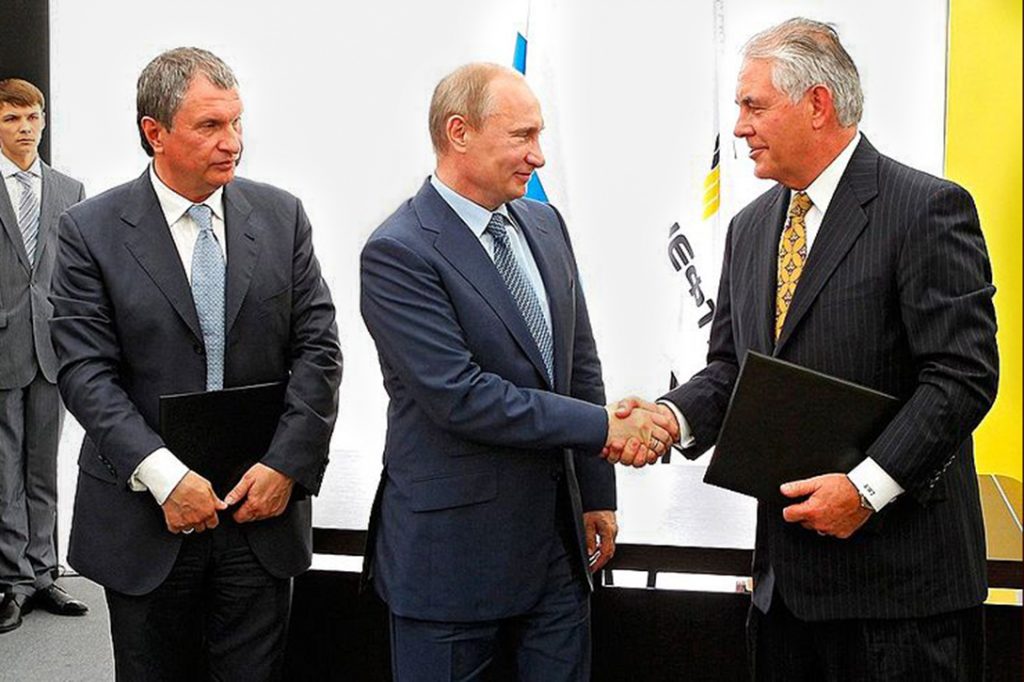
President Vladimir Putin, Igor Sechin, Chairman of the Board of Rosneft (left) and Rex Tillerson, Chairman of ExxonMobil signed an agreement on joint development of petroleum reserves in Western Siberia, June 2012. Photo credit: President of Russia / Wikimedia (CC BY 3.0)
An even closer friend of Putin in Trump’s team, ironically, is former Exxon CEO Rex Tillerson, his Secretary of State.[65] In fact Tillerson, through Exxon’s development of Russian oilfields, “has deep ties to Russia, dating back to the Boris Yeltsin administration.”[66] As Julian Borger told the Guardian,
Putin… bestowed the Order of Friendship on Tillerson in 2013. The Wall Street Journal reported: “Friends and associates said few US citizens are closer to Mr. Putin than Mr. Tillerson.”[67] The 64-year-old Texas oilman spent much of his career working on Russian deals, including a 2011 agreement giving Exxon Mobil access to the huge resources under the Russian Arctic in return for giving the giant state-owned Russian oil company, OAO Rosneft, the opportunity to invest in Exxon Mobil’s operations overseas. ….The 2011 Exxon-Rosneft agreement was frozen when sanctions were imposed on Russia in 2014, following the annexation of Crimea and covert military intervention in eastern Ukraine. Exxon Mobil estimated the sanctions cost it $1bn and Tillerson has argued strenuously for the measures to be lifted.[68]
The $500 billion Exxon-Rosneft exploration deal, allegedly “the biggest oil deal ever,” was so huge that the Wall Street Journal reported in 2014 that its temporary cancellation “put Exxon at risk.”[69]
Trump’s criticisms of Obama’s sanctions on Russia were one powerful reason for Exxon to prefer Trump in the 2016 election.[70] But Trump was also attractive for his promises of deregulation:
President Trump will “absolutely” be a boon to Exxon and the rest of the oil industry, Fadel Gheit, an analyst at Oppenheimer & Co., said in a telephone interview. “The industry hasn’t asked for a hand up from Washington, but instead has said, ‘Get off our backs.’ Less regulation means less burden” on oil explorers.[71]
And Trump clearly will continue Exxon’s longtime history of opposition to measures to control global warming.[72] (When still CEO, Tillerson ended Exxon’s two decades of strenuous climate change denial, and came out for a carbon tax. But skeptics, including The New York Times, suspected this was merely a skillful means of defeating the more viable “cap-and-trade” carbon proposals that were then being debated in Congress, and ultimately defeated.)[73]
My book The American Deep State documents the leading role played by Exxon behind the elections of the oil-friendly presidents Eisenhower in 1952, and Reagan in 1980 (below, pp. 18-20, 27-28). It is not surprising that Exxon in 2016 should have helped propel yet another former television performer into the White House.
The “Party of Davos” and the “New New International Order”
In short, the Trump team connections to the Russian state and deep state — both overt (through Exxon) and covert (through Manafort and Alfa) would appear to link Trump to a shady larger network or networks connected also to the same Washington swamp he promised to drain. Such networks led me in the Preface to the French edition of this book to talk of
a supranational milieu of the super-rich, just eighty of whom are now said to own nearly as much as the 3.5 billion people who occupy the bottom half of the world’s income scale.[74] Thanks to the enormous increase in global wealth in recent years, the “global power elite” who meet annually at Davos now have far more influence on how the world will be governed than those who meet annually at the United Nations General Assembly.
Those at Davos do not need to give instructions to the American deep state, which is already structured around responsiveness to the requirements of extreme wealth in Wall Street and elsewhere. And some of them are members of what have been called “shadow elites, those whose influence stems from illicit or unconventional means.”[75]
Naomi Klein, ascribing Trump’s victory to the neoliberalism of the Democrats and of Davos, has written of the rise of the Davos class, a hyper-connected network of banking and tech billionaires, elected leaders who are awfully cosy with those interests (neoliberal policies), and Hollywood celebrities who make the whole thing seem unbearably glamorous.[76]
And before becoming the Chief Strategist and Senior Counselor in the Trump White House, Steve Bannon, while executive chair of Breitbart News, had said in a speech at the Vatican that working men and women in the world were “tired of being dictated to by what we call the party of Davos.”[77]
Trump has just chosen an ambassador to the European Union, Ted Malloch, a professor “well-known for his pro-Brexit and anti-EU views,” positions consistent “with Trump’s longstanding anti-EU and anti-NATO biases.” Reporting this, Salon notes also that “some American foreign policy watchers are concerned that he is also motivated by his close ties to Russian dictator Vladimir Putin.”[78]
The Trump attack on the “party of Davos,” the status quo of the world superclass, is likely to continue.[79] On January 26, Trump announced “he would strike numerous bilateral trade deals, as opposed to multilateral accords like the Trans-Pacific Partnership.”[80]
This approach, which by itself could please China as well as Russia, seems to reflect a coherent effort to replace the old consensus of the “party of Davos”, with what the right-wing Drudge Report approvingly called the “new, new world order”.[81]
The “New, New World Order” may be said to represent the mavericks of the international deep state, eager to dispense with the regulations of the old insiders. But they are still part of the nexus of uncontrolled big money, even if drawn more from the under-reported shady underside of that superclass.
As I write after just one week of Trump in office, it already seems clear that we can expect a “Trump revolution,” one that will almost certainly attempt to reflect and repeat the major features (deregulation, anti-abortion measures, a defense spending buildup, tax cuts for the rich, and deficit financing) of the Reagan revolution before it. And it should not be too surprising if the Trump revolution, just like the Reagan revolution before it, turns out to have been not just financed, but partly plotted, at the levels of the American and the international deep state.[82]
Personal Postscript
As I write this new Introduction in January 2017, the involuntary response to Trump’s election from many of my friends in both political parties has been anger, hatred, or despair. Many, like Michael Kinsley in the Washington Post, have charged that “Donald Trump is a fascist.”[83] From such alienation, millions of people protested worldwide, the day after Trump’s inauguration, in what was perhaps the world’s first global political action. This was a welcome step towards shaping a global active public opinion.
It is true that Trump, like Hitler, campaigned against big bankers while quietly taking money from them. But the infant Weimar Republic Hitler overthrew, jerry-built amid the ruins of post-war Germany, cannot be compared to the constitution and civil polity of America, among the oldest and hardiest in the world.
I say below (p.99) that America is also exceptional
for its percentage of citizens who are incarcerated, for its disparity in wealth and income between rich and poor (a ratio exceeded among large nations only by China), and for its indiscriminate use of lethal power abroad.
From the beginning, America has been embroiled in major divisions, arising chiefly from its amazing diversity. But it is also the leader among world powers in its ability to process and transcend, however imperfectly, these divisions.
As so many times before in US history, we are entering another period of divisions and protests. But a successful protest of the nonviolent kind I hope for in this book (see below, pp. 164, 181-90) must be one inspired by deeply critical love of this flawed country, not by hatred.
References
[1] Michael C. Bender and Damian Paletta, “Donald Trump Plans to Undo Dodd-Frank Law, Fiduciary Rule,” Wall Street Journal, February 3, 2017, https://www.wsj.com/articles/trump-moves-to-undo-dodd-frank-law-1486101602. Cf.
[2] R.G. Ratcliffe, “Obama’s final campaign speech of 2008,” Houston Chronicle, October 27, 2008, http://blog.chron.com/texaspolitics/2008/10/obamas-final-campaign-speech-of-2008/.
[3] Eugene Kiely, “Obama, “White House ‘Full of Wall Street Executives’?” Factcheck.org, March 1, 2012.
[4] Eric Lichtblau and Steven Lee Myers, “Investigating Donald Trump, F.B.I. Sees No Clear Link to Russia,” New York Times, October 31, 2016, https://www.nytimes.com/2016/11/01/us/politics/fbi-russia-election-donald-trump.html (FBI); “Cheney Firm Won $3.8bn Contracts from Government,” Observer, July 21, 2002, http://www.guardian.co.uk/world/2002/jul/21/globalisation.georgebush. See below.
[5] Anand Giridharadas, “Examining Who Runs the United States,” New York Times, September 15, 2015, https://www.nytimes.com/2015/09/15/us/examining-who-runs-the-united-states.html?_r=0. I believe the first to apply the Turkish term “deep state” (derin deret) to U.S. politics was the Swedish writer Ola Tunander (Peter Dale Scott, The Road to 9/11 [Berkeley: University of California Press, 2007], x, 244, 270, 384).
[6] Michael Covel, “The Deep State V. Trump,” Daily Reckoning, August 25, 2016, https://dailyreckoning.com/deep-state-v-trump/: “Donald Trump has the establishment scared out of their establishment minds.”
[7] Ryan Lizza, “Roger Stone Versus the ‘Deep State’”, New Yorker, January 20, 2017, http://www.newyorker.com/news/news-desk/roger-stone-versus-the-deep-state. Stone has been described as a “political provocateur” who “helped choreograph the… riot which shut down the Bush v. Gore recount in Miami-Dade County” (Jeffrey Toobin, “Bad Old Days,” New Yorker, May 2. 2016, http://www.newyorker.com/magazine/2016/05/02/the-political-provocateur-roger-stone-talks-trump. During the campaign, Stone and fellow provocateur Milo Yiannopoulos of Breitbart together promoted the divisive notion “how the general election will almost certainly be hijacked by acts of voter fraud” — by Democrats (Ken Meyer, :Roger Stone Says There Will Be a ‘Bloodbath’ if Election is Stolen From Trump,” Medaite.com, August 2, 2016, http://www.mediaite.com/online/roger-stone-says-there-will-be-a-bloodbath-if-election-is-stolen-from-trump/. Their politics of division is shared by Steve Bannon, who “is so dominated by a desire to wage war and vanquish his enemy that he cannot think clearly about damage wrought by his destructive, polarizing approach” (Conor Friedersdorf, “The Radical Anti-Conservatism of Stephen Bannon,” Atlantic, August 25, 2016, http://www.theatlantic.com/politics/archive/2016/08/the-radical-anti-conservatism-of-stephen-bannon/496796/).
[8] Covel, “The Deep State V. Trump.” Cf. John W. Whitehead, “The Deep State: The Unelected Shadow Government Is Here to Stay,” Rutherford Institute, November 10, 2015, https://www.rutherford.org/publications_resources/john_whiteheads_commentary/the_deep_state_the_unelected_shadow_government_is_here_to_stay: “The Deep State…is comprised of unelected government bureaucrats, corporations, contractors, paper-pushers, and button-pushers who are actually calling the shots behind the scenes right now.”
[9] “Chris Hedges on How the ‘Deep State’ Will Influence the Trump Presidency,” Truthdig, Jan 17, 2017, http://www.truthdig.com/avbooth/item/chris_hedges_the_deep_state_will_influence_the_trump_presidency_20170117. In this camp are Glenn Greenwald, who equates the “deep state” with “the intelligence community,” and Eric Margolis, who equates it with “the massed national security apparatus” (Glenn Greenwald, “The Deep State Goes to War with President-Elect, Using Unverified Claims, as Democrats Cheer,” The Intercept, January 11, 2017, https://theintercept.com/2017/01/11/the-deep-state-goes-to-war-with-president-elect-using-unverified-claims-as-dems-cheer/; Eric Margolis, “Trump Versus the Deep State,” The Unz Review, January 13, 2017, http://www.unz.com/emargolis/trump-versus-the-deep-state/.
[10] Mike Lofgren, The Deep State: The Fall of the Constitution and the Rise of a Shadow Government (New York: Viking, 2016); Philip Giraldi, “Deep State America,” The American Conservative, July 30, 2015, http://www.theamericanconservative.com/articles/deep-state-america/.
[11] Peter Dale Scott, The American Deep State (Lanham, MD: Rowman & Littlefield, 2015), 30. I later wrote in Dallas ’63: “In The American Deep State I devoted only a few lines to the oppositional faction of right-wing Texas oilmen and the John Birch Society, opposed to the relative internationalism of Wall Street. In this [book] we shall see that under Kennedy their opposition was so deeply embedded that America was, for a while, ruled by a dyadic deep state” (Peter Dale Scott, Dallas ’63: The First Deep State Revolt Against the White House [New York: Open Road Media, 2015], 191).
[12] “Divided States of America,” Part 1, Frontline, PBS, January 17, 2017. Cf. Jane Mayer, Dark Money: The Hidden History of the Billionaires Behind the Rise of the Radical Right(New York: Doubleday, 2015), 165-68.
[13] Rick Ames and Yasha Levine, “Exposing The Rightwing PR Machine: Is CNBC’s Rick Santelli Sucking Koch, The Exiled, February 27, 2009, http://exiledonline.com/exposing-the-familiar-rightwing-pr-machine-is-cnbcs-rick-santelli-sucking-koch/; Chris Douglas, “The Tax That Started the Tea Party,” FrumForum. September 3, 2010, http://www.frumforum.com/the-tax-that-started-the-tea-party/. Cf. Peter Dale Scott, “POEM: To the Tea-Party Patriots: A Berkeley Professor says Hello!,” GlobalResearch, November 2, 2010, http://www.globalresearch.ca/poem-to-the-tea-party-patriots-a-berkeley-professor-says-hello/21727; reprinted in Peter Dale Scott, Tilting Point (San Luis Obispo, CA : Word Palace Press, 2012), 42.
[14] Jane Mayer, “Covert Operations: The Billionaire Brothers Who Are Waging a War Against Obama,” New Yorker, August 30, 2010, http://www.newyorker.com/magazine/2010/08/30/covert-operations; Mayer, Dark Money, 167-68, 193. In 2014 the Koch brothers were tied for sixth place among the world’s wealthiest, with $40.7 billion each. Combined, their net worth is $81.4 billion, which was higher than the highest-ranking individual on the list — Microsoft founder Bill Gates, at $77.8 billion (Louis Jacobson, “Harry Reid says Koch brothers are richest family in the world,” Politifact, April 2, 2014, http://www.politifact.com/truth-o-meter/statements/2014/apr/02/harry-reid/harry-reid-says-koch-brothers-are-richest-family-w/). Chris Douglas observes, “Until the Bush tax cuts, the estate tax stood at 55%. As a result of the tax cuts initiated by the Bush administration, by 2010, it was zero. Unless Congress acts, it will return full-force to 55% in 2011. To understand the impact on the Koch family, consider that some reports place the wealth of the Koch brothers at $36 billion dollars [in 2010; four years later Forbes estimated it at $81 billion], their company second at times only to Cargill as the largest privately held company in America. To the Koch family, a 55% estate tax means they must contemplate a corporate re-organization, the result of which would conceptually be to go public and sell off 55% of their shares in order to pay the tax or, more likely, that they would donate the majority of shares to a charitable foundation. Either way, the estate tax at 55% would entail a transformation of Koch Industries and a diversification of ownership, with ramifications for the family’s long term control” (Chris Douglas, “The Tax That Started the Tea Party”).
[15] Mayer, Dark Money, 167. Cf, Nella Van Dyke and David S. Meyer, eds., Understanding the Tea Party Movement (Burlington, VT: Ashgate Pub. Company, 2014), 100.
[16] Peter Dale Scott, “Bringing It All Together: The New Releases and How They Help Us Converge on the Heart of the Case,” The Fourth Decade, Vol. 4, #1, November, 1996; republished at http://www.assassinationweb.com/scotte.htm. Of the eleven businessmen at the 1958 founding meeting of the John Birch Society, many, including the founder Robert Welch, were former members of the National Association of Manufacturers (Terry Lautz, John Birch: A Life [New York: Oxford University Press, 2016]. 225). One was William J. Grede, who served as president of the National Association of Manufacturers in 1952. Still another was Fred Koch, father of Charles and David Koch (Jeff Nesbit, Poison Tea: How Big Oil and Big Tobacco Invented the Tea Party and Captured the GOP [New York: Thomas Dunne Books, 2016], 30; Van Dyke and Meyer, Understanding the Tea Party Movement, 100). Charles and David Koch also joined the John Birch Society.
[17] Kevin Phillips, Wealth and Democracy: A Political History of the American Rich (New York: Broadway Books, 2002). 422; quoted in Peter Dale Scott, The Road to 9/11[Berkeley: University of California Press, 2007], 3, cf. 254.
[18] “World’s Eight Richest as Wealthy as Half Humanity, Oxfam Tells Davos.” Reuters, January 16, 2016, http://www.reuters.com/article/us-davos-meeting-inequality-idUSKBN150009.
[19] “From Fracking to Finance, a Torrent of Campaign Cash,” New York Times, October 10, 2015,
https://www.nytimes.com/2015/10/11/us/politics/wealthy-families-presidential-candidates.html#donors-list. Much of the petroleum wealth was probably also aimed at preventing climate change regulations.
[20] “From Fracking to Finance, a Torrent of Campaign Cash,” New York Times, October 10, 2015.
[21] Amy Chosick, “Warren Buffett Endorses Hillary Clinton and Calls for Higher Taxes on Wealthy,” New York Times, December 16, 2015, https://www.nytimes.com/politics/first-draft/2015/12/16/warren-buffett-endorses-hillary-clinton-and-calls-for-higher-taxes-on-wealthy/?_r=0.
[22] Sarah Jaffe, Necessary Trouble: Americans in Revolt (New York: Nation Books, 2016), 265. None of the eight endorsed Trump, who pointedly distanced himself from the Kochs during the campaign.
[23] Mayer, Dark Money, 17.
[24] Fredreka Schouten, “Koch brothers set $889 million budget for 2016, USA Today, January 27, 2015, http://www.usatoday.com/story/news/politics/2015/01/26/koch-brothers-network-announces-889-million-budget-for-next-two-years/22363809/.
[25] Abigail Tracy, “The Brewing Billionaire Feud at the Heart of the G.O.P.,” Vanity Fair, September 7, 2016, http://www.vanityfair.com/news/2016/09/robert-rebekah-mercer-charles-david-koch-republican-party.
[26] Kenneth P. Vogel and Eliana Johnson, “Trump’s Koch Administration,” Politico, November 28, 2016, http://www.politico.com/story/2016/11/trump-koch-brothers-231863
[27] Jeremy Scahill, “Notorious Mercenary Erik Prince Is Advising Trump from the Shadows,” The Intercept, January 17 2017, https://theintercept.com/2017/01/17/notorious-mercenary-erik-prince-is-advising-trump-from-the-shadows/: “In July [2016], Prince told Trump’s senior adviser and white supremacist Steve Bannon, at the time head of Breitbart News, that the Trump administration should recreate a version of the Phoenix Program, the CIA assassination ring that operated during the Vietnam War, to fight ISIS.”
[28] Mayer, Dark Money, 15, 276.
[29] Valerie Volcovici, “Trunp Administration Tells EPA To Cut Climate Page from Website: Sources,” Reuyers, January 25, 2017, http://mobile.reuters.com/article/idUSKBN15906G?feedType=RSS&feedName=politicsNews.
[30] On page 5 of this book, I refer to a formerly “minority element in our political economy [that now] finances and dominates both parties, and indeed is now also financing threats to both parties from the right, as well as dominating our international policy. As a result, liberal Republicans are as scarce in the Republican Party today as Goldwater Republicans were scarce in that party back in 1960.” Today I would no longer define this element as “the military-industrial complex,” but the trend has become even more clear.
[31] Matt Taibbi, ‘Trump Nominee Jay Clayton Will Be the Most Conflicted SEC Chair Ever,’ Rolling Stone, January 5, 2017, http://www.rollingstone.com/politics/features/trump-pick-jay-clayton-to-be-most-conflicted-sec-chair-ever-w459289. Clayton’s wife Gretchen is a wealth management advisor at Goldman Sachs.
[32] Conor Friedersdorf, “The Radical Anti-Conservatism of Stephen Bannon,” Atlantic, August 25, 2016.
[33] Josh Dawsey, Eliana Johnson and Annie Karni, “The man behind Trump? Still Steve Bannon,” Politico, January 29, 2017, http://www.politico.com/story/2017/01/donald-trump-steve-bannon-234347.
[34] “How One Family’s Deep Pockets Helped Reshape Donald Trump’s Campaign By Nicholas Confessore Aug. 18, 2016 http://www.nytimes.com/2016/08/19/us/politics/robert-mercer-donald-trump-donor.html?_r=0
[35] Bloomberg BusinessWeek, August 31, 2016, https://www.bloomberg.com/politics/articles/2016-08-31/steven-mnuchin-businessweek When Mnuchin was Financial Chairman of the Trump campaign, his counterpart at the RNC was Lew Eisenberg, his father’s old partner at Goldman Sachs.
[36] Pam Martens and Russ Martens, “Here’s How Goldman Sachs Became the Overlord of the Trump Administration,” Wall Street on Parade, January 9, 2017, http://wallstreetonparade.com/2017/01/heres-how-goldman-sachs-became-the-overlord-of-the-trump-administration/
[37] Jeffrey D. Sachs, The Price of Civilization: Reawakening American Virtue and Prosperity(New York: Random House, 2011), 117.
[38] Zeke Faux, “Goldman CEO Blankfein ‘Supportive’ of Clinton for Pragmatism,”
Bloomberg, October 22, 2016, https://www.bloomberg.com/politics/articles/2016-10-22/goldman-ceo-blankfein-supportive-of-clinton-for-pragmatism.
[39] “Deep state in the United States,” Wikipedia, https://en.wikipedia.org/wiki/Deep_state_in_the_United_States. The five authors are Philip Giraldi, Bill Moyers, David Talbot, Mike Lofgren, and myself.
[40] Scott, The American Deep State, 14-15, 30-35, etc.) The Pentagon, unmentioned by Wikipedia, is hard to classify. Although the Department of Defense is part of the official state and headed by a cabinet member, it contains within it the NSA, which simultaneously reports to the Director of National Intelligence. Other Pentagon agencies, such as DIA and JSOC, also deserve to be classified with the deep state.
[41] Mike Lofgren, The Deep State: The Fall of the Constitution and the Rise of a Shadow Government (New York: Viking, 2016), 5. I see no further references in Lofgren’s book to organized crime; his notion of the deep state focuses primarily on the Beltway agencies.
[42] Hugh Roberts, The Hijackers.” London Review of Books, July 16, 2015, http://www.lrb.co.uk/v37/n14/hugh-roberts/the-hijackers, a review of Jean-Pierre Filiu, From Deep State to Islamic State: The Arab Counter-revolution and Its Jihadi Legacy (Oxford : Oxford University Press, [2015]).
[43] Jean-Louis Briquet; Gilles Favarel-Garrigues; Roger Leverdier, eds. Organized Crime and States: The Hidden Face of Politics (New York: Palgrave Macmillan, 2010). 43-44; Peter Dale Scott, American War Machine: Deep Politics, the CIA Global Drug Connection, and the Road to Afghanistan (Lanham, MD: Rowman & Littlefield Publishers, 2010), 19-20. Çatlı “is reckoned to have been one of the main perpetrators of underground operations carried out by the Turkish branch of the Gladio organisation and had played a key role in the bloody events of the period 1976-80 which paved the way for the military coup d’état of September 1980” (“Turkey’s pivotal role in the international drug trade, Le Monde diplomatique, July 1998).
[44] Desmond Fernandes and Iskender Ozden, “United States and NATO inspired ‘psychological warfare operations’ against the ‘Kurdish communist threat’ in Turkey”. Variant. 12, https://web.archive.org/web/20060614080445/http://www.variant.randomstate.org/12texts/Fernandes.html; Daniele Ganser, NATO’s Secret Armies: Operation Gladio and Terrorism in Western Europe(New York: Frank Cass, 2005), 241.
[45] Hakan Aslaneli and Zafer F. Yoruk, ‘Traffic Monster’ reveals state-mafia relations”. Hürriyet, November 7, 1996; Scott, American War Machine, 4-6, etc.
[46] Ryan Gingeras, Heroin, Organized Crime, and the Making of Modern Turkey (Oxford: Oxford University Press, 2014), 228; citing Soner Yalçın and Doğan Yurdakul, Reis: Gladio’num Türk Teriçisi (Istanbul: Doğan Kitapeilik, 2007), 152-56.
[47] Scott, American War Machine, 20; cf.p.30: In Italy “Stefano delle Chiaie was eventually accused of involvement in the Piazza Fontana and Bologna bombings as well as the Borghese coup.” The Condor Operation (about which I will say more) was responsible for the 1976 murder in Washington of former Chilean diplomat Orlando Letelier.
[48] HRFT Human Rights Foundation of Turkey Human Rights Report – TİHV, en.tihv.org.tr/wp-content/uploads/2015/…/Ra1998HumanRigthsReport.pdf, 39. In addition, no one has yet fully explained why one of the fake passports found in Çatlı’s possession was in the name “Mehmet Özbay”, an alias used fifteen years earlier by Mehmet Ali Ağca, the Turk who in 1081 attempted to kill Pope John Paul II (Peter Dale Scott, American War Machine: Deep Politics, the CIA Global Drug Connection, and the Road to Afghanistan [Lanham, MD: Rowman & Littlefield Publishers, 2010], 19; Ryan Gingeras, Heroin, Organized Crime, and the Making of Modern Turkey [Oxford: Oxford University Press, 2014], 228.
[49] Dexter Filkins. “The Deep State,” The New Yorker, March 12, 2012, http://www.newyorker.com/magazine/2012/03/12/the-deep-state: “Prosecutors maintain that Ergenekon is the deep state itself—not merely a cabal of reactionary officers within the military but a shadow government that aims at making Turkish democracy permanently unstable.”
[50] Tim Arango and Ceylan Yeginsu, “Turks Can Agree on One Thing: U.S. Was Behind Failed Coup,” New York Times, August 2, 2016, https://www.nytimes.com/2016/08/03/world/europe/turkey-coup-erdogan-fethullah-gulen-united-states.html?_r=0.
[51] On page 47 I speak of “a deep event, by which I mean an event predictably suppressed in the media and still not fully understandable.”
[52] “Donald Trump’s Many, Many, Many, Many Ties to Russia.” Time, August 16, 2016, http://time.com/4433880/donald-trump-ties-to-russia/
[53] Kenneth P. Vogel and David Stern, “Ukrainian efforts to sabotage Trump backfire…. Kiev officials are scrambling to make amends with the president-elect after quietly working to boost Clinton,” Politico, January 11, 2017, http://www.politico.com/story/2017/01/ukraine-sabotage-trump-backfire-233446: “A Ukrainian-American operative who was consulting for the Democratic National Committee met with top officials in the Ukrainian Embassy in Washington in an effort to expose ties between Trump, top campaign aide Paul Manafort and Russia, according to people with direct knowledge of the situation. The Ukrainian efforts had an impact in the race, helping to force Manafort’s resignation and advancing the narrative that Trump’s campaign was deeply connected to Ukraine’s foe to the east, Russia.”
[54] Ibid.
[55] “Trump Adviser’s Ties Raise Security Questions,” BuzzfeedNews, May 6, 2016, https://www.buzzfeed.com/bensmith/manafort-russia?utm_term=.htL7NyLEDb#.elgKkM63xN, linking to “Inside Trump adviser Manafort’s world of politics and global financial dealmaking” (Washington Post, April 26, 2016, https://www.washingtonpost.com/politics/in-business-as-in-politics-trump-adviser-no-stranger-to-controversial-figures/2016/04/26/970db232-08c7-11e6-b283-e79d81c63c1b_story.html?utm_term=.db8349a4a754). These charges should not be confused with the more sensational Buzzfeed leak in January 2017 of a private intelligence report shown by the CIA to Trump (https://www.buzzfeed.com/kenbensinger/these-reports-allege-trump-has-deep-ties-to-russia?utm_term=.ppJ6nP7KJA#.hrE3zm5pPx). This report, by former British intelligence Christopher Steele, did not as released mention Deripaska, but contained instead an unexplained discussion of the Alfa Group, whose connections to Halliburton when run by Dick Cheney are discussed by me in American War Machine, 187.
[56] “Intercepted Russian Communications Part of Inquiry Into Trump Associates,” New York Times, January 19, 2017, https://www.nytimes.com/2017/01/19/us/politics/trump-russia-associates-investigation.html. For a critique of Manafort’s and Stone’s responses to the charges, see Joseph Cannon at http://cannonfire.blogspot.com/2017/01/busted-on-inauguration-day.html. In addition to the charge that Russian officials helped Trump, Politico has also claimed that “Ukrainian government officials tried to help Hillary Clinton” (Ukrainian Efforts to Sabotage Trump Backfire,” Politico, January 11,2017, http://www.politico.com/story/2017/01/ukraine-sabotage-trump-backfire-233446.
[57] https://www.buzzfeed.com/kenbensinger/these-reports-allege-trump-has-deep-ties-to-russia?utm_term=.ppJ6nP7KJA#.hrE3zm5pPx.
[58] Eric Lichtblau and Steven Lee Myers, “Investigating Donald Trump, F.B.I. Sees No Clear Link to Russia,” New York Times, October 31, 2016, https://www.nytimes.com/2016/11/01/us/politics/fbi-russia-election-donald-trump.html.c f. Geoffrey Smith, “Meet the Russian Bank with Ties to Donald Trump,” Fortune, November 2, 2016, http://fortune.com/2016/11/02/donald-trump-alfa-bank/.
[59] Larry Cohler-Esses, “Is Jewish Oligarch the Cyber Link Between Donald Trump and Russia?” Forward, November 1, 2016, http://forward.com/news/world/353170/is-a-russian-israeli-oligarch-running-a-covert-cyber-channel-between-trump/.
[60] Scott, American War Machine, 187: “Diligence’s chief transnational connection in Russia is Alfa Bank. The chairman of Diligence from 2001 to 2007 was former U.S. ambassador and arms negotiator Richard Burt, of Barbour, Griffith and Rogers and McLarty Kissinger Associates. Burt, a neoconservative who once called the SALT agreement “a favor to the Russians,” is also on the Alfa Bank’s Senior Advisory Board in Moscow.
[61] “Cheney Firm Won $3.8bn Contracts from Government,” Observer, July 21, 2002, http://www.guardian.co.uk/world/2002/jul/21/globalisation.georgebush; quoted in Scott, American War Machine, 187. In 2003 the Alfa Group of investors formed a 50-50 joint venture with BP, called TNK-BP. A dispute in 2011 between Mikhail Fridman and BP led Rosneft, blocked in its plans to develop its Arctic oilfields with BP, to agree to a deal on the same Arctic acreage with ExxonMobil instead (Guy Chazan and John Thornhill, “Mikhail Fridman: The Alpha oligarch,” Financial Times, March 5, 2015, https://www.ft.com/content/b47de3d4-c325-11e4-ac3d-00144feab7de). See below.
[62] Knut Royce and Nathaniel Heller, “Cheney led Halliburton to feast at federal trough,” Center for Public Integrity [CPI]. August 2, 2000 Updated: 12:19 pm, May 19, 2014; https://www.publicintegrity.org/2000/08/02/3279/cheney-led-halliburton-feast-federal-trough. Alfa sued CPI for libel over the release of the Royce report, but in 2005 the suit was dismissed. Federal Judge John D. Bates wrote “No claim is made that the defendants fabricated the assertions in the CPI article. Nor are the allegations of organized mob ties and drug trafficking so inherently improbably [sic] that actual malice can be presumed” (“Libel case over mafia-Halliburton link dismissed,” Reporters’ Committee for Freedom of the Press, October 4, 2005, http://www.rcfp.org/browse-media-law-resources/news/libel-case-over-mafia-halliburton-link-dismissed).
[63] Michael Cowley, “The Kremlin’s Candidate,” Politico. May/June 2016, http://www.politico.com/magazine/story/2016/04/donald-trump-2016-russia-today-rt-kremlin-media-vladimir-putin-213833.
[64] Natasha Bertrand, “A far-right Austrian leader who just signed a pact with Putin says he met with Trump’s national security adviser in New York,” Business Insider, December 20, 2016, http://www.businessinsider.com/michael-flynn-putin-trump-austria-far-right-2016-12.
[65] I say “ironically,” because Exxon, until the 1960s, joined the other big oil majors in plotting to exclude the Soviet Union from international oil markets. This change is characteristic of how increasing globalization has changed the international deep state.
[66] http://www.forbes.com/sites/jenniferwang/2016/12/13/trump-taps-exxonmobil-ceo-putin-ally- rex-tillerson-to-be-secretary-of-state/#46e49c726a55
[67] Cf. Bradley Olson, “Rex Tillerson, a Candidate for Secretary of State, Has Ties to Vladimir Putin,” Wall Street Journal, December 6, 2016, https://www.wsj.com/articles/donald-trump-candidate-for-state-has-close-ties-to-vladimir-putin-1481033938.
[68] Julian Borger, “Rex Tillerson: an appointment that confirms Putin’s US election win,” Guardian, December 13, 2016, https://www.theguardian.com/us-news/2016/dec/11/rex-tillerson-secretary-of-state-trump-russia-putin .
[69] Daniel Gilbert, “Sanctions Over Ukraine Put Exxon at Risk: Deal With Russia’s Rosneft to Drill in Arctic Is Crucial to Oil Company,” Wall Street Journal, September 11, 2014, https://www.wsj.com/articles/sanctions-over-ukraine-put-exxon-at-risk-1410477455. The deal was originally made by Rosneft with BP, but the BP deal was blocked by a successful legal challenge from a company controlled by Mikhail Fridman. See above.
[70] An Exxon link to the Trump campaign surfaced in June 1916, when Paul Manafort, then the campaign chairman, hired leading Exxon lobbyist Jim Murphy to be the campaign’s national political director (Melissa Cronin, “This lobbyist denied climate change for ExxonMobil. Now he’ll do it for Trump,” Grist.org, June 7, 2016, http://grist.org/climate-energy/this-lobbyist-denied-climate-change-for-exxonmobil-now-hell-do-it-for-trump/).
[71] Joe Carroll, “Exxon CEO-in-Waiting to Inherit Rex Tillerson’s Mixed Legacy.” Bloomberg, December 12, 2016, 4:55 PM PST December 13, 2016, https://www.bloomberg.com/news/articles/2016-12-13/exxon-s-ceo-in-waiting-to-inherit-rex-tillerson-s-mixed-legacy.
[72] Farron Cousins, “Republican Attorneys General Met Secretly with Exxon Lobbyists to Stop Climate Change Investigations,” Desmog, September 30, 2016, https://www.desmogblog.com/2016/09/30/republican-attorneys-general-met-secretly-exxon-stop-climate-change-investigations.
[73] John Schwartz, “Tillerson Led Exxon’s Shift on Climate Change; Some Say ‘It Was All P.R.’”, New York Times, December 28, 2016, https://www.nytimes.com/2016/12/28/business/energy-environment/rex-tillerson-secretary-of-state-exxon.html.
[74] Patricia Cohen, “Oxfam Study Finds Richest 1% Is Likely to Control Half of Global Wealth by 2016,” New York Times, January 19, 2015. By an earlier estimate, “In 2010, the wealth of the world’s eleven million super-rich individuals stood at $43 trillion, or 70 percent of global gross domestic product” (Financial Times, May 6, 2012, 4).
[75] David Rothkopf, Superclass: The Global Power Elite and the World They Are Making (New York: Farrar, Straus and Giroux, 2009), 289; cf. xx.
[76] Naomi Klein, “It was the Democrats’ embrace of neoliberalism that won it for Trump,” Guardian, November 9, 2016, https://www.theguardian.com/commentisfree/2016/nov/09/rise-of-the-davos-class-sealed-americas-fate. Cf. Andrew Ross Sorkin, “Dealbook: What to Make of the ‘Davos Class’ in the Trump Era,” New York Times, January 16, 2017, https://www.nytimes.com/2017/01/16/business/dealbook/world-economic-forum-davos-trump.html: “The World Economic Forum — an annual gathering of global policy and business leaders… known as the ‘Davos class.’ It is this group of so-called plutocrats that largely failed to anticipate — and may have even unconsciously generated — the seeping anti-establishment movement across the globe.
[77] Matt Clinch, “The ‘party of Davos’ wakes up to the new, new world order,” CNBC, Januaty 9, 2017 http://www.cnbc.com/2017/01/09/davos-wakes-up-to-the-trump-new-world-order.html.
[78] Matthew Rozsa, “President Trump’s United Nations, European Union ambassadors send early message, shock waves,” Salon, January 27, 2017, http://www.salon.com/2017/01/27/president-trumps-united-nations-european-union-ambassadors-send-early-message-shock-waves/.
[79] The “party of Davos” is a target of a new book by Hugh Hewitt (The Fourth Way: The Conservative Playbook for a Lasting GOP Majority (New York: Simon & Schuster, January 2017).
[80] “Trump says plans lots of bilateral trade deals with quick termination clauses,” Reuters, January 26, 2017, http://www.reuters.com/article/us-usa-trump-trade-idUSKBN15A2MP?feedType=RSS&feedName=politicsNews.
[81] Clinch, “The ‘party of Davos’ wakes up to the new, new world order,” CNBC, January 9, 2017.
[82] See Scott, The American Deep State, 101–08.
[83] Michael Kinsley, “Donald Trump is actually a fascist,” Washington Post, December 9, 2o16, https://www.washingtonpost.com/opinions/donald-trump-is-actually-a-fascist/2016/12/09/e193a2b6-bd77-11e6-94ac-3d324840106c_story.html?utm_term=.09661e9af547.



